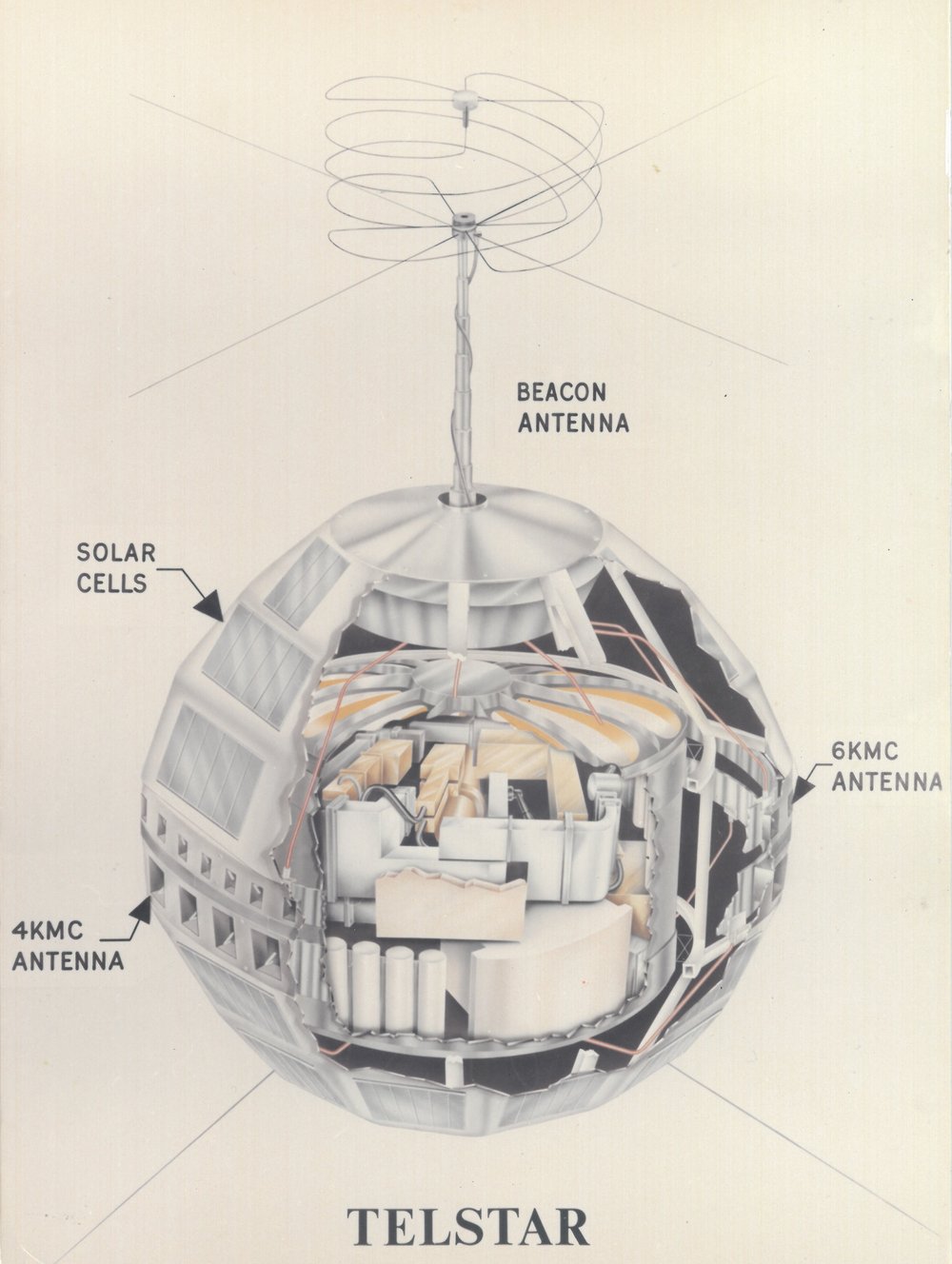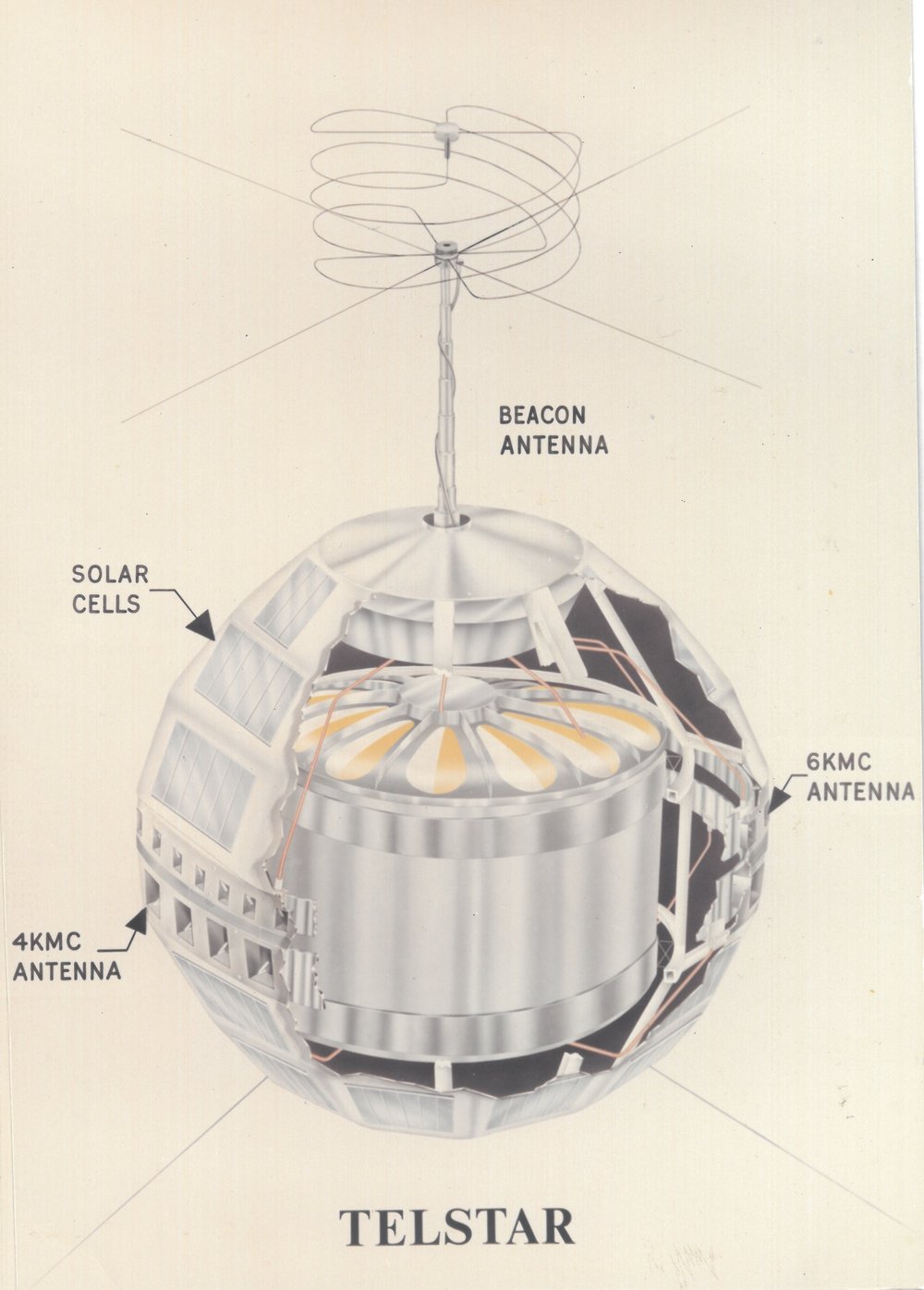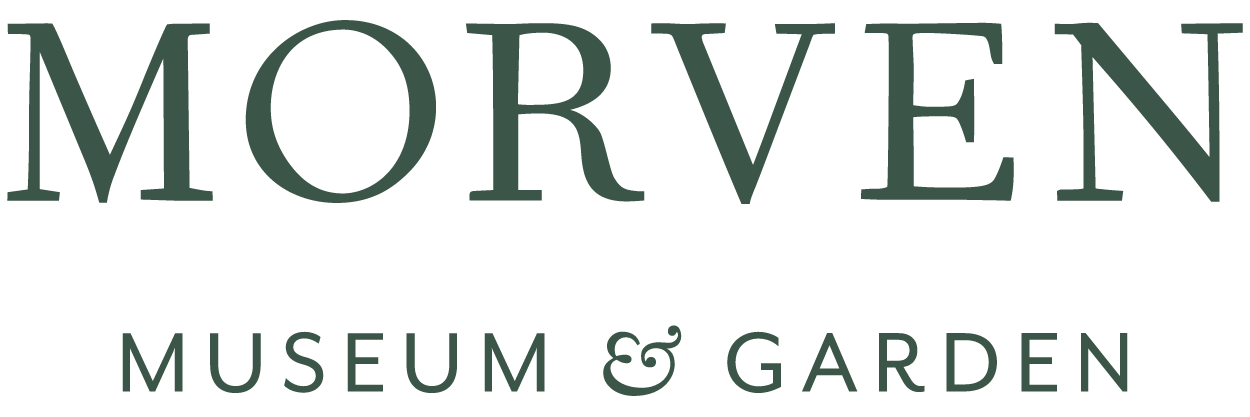
Telstar I
More information on “Telstar I”.
Click here to return to Gallery 5.
Developmental Models of Active Satellites, Front cover of Bell System Technical Journal, 1961

Telstar was a far more complicated satellite than Echo had been. Echo had a staff of about three dozen, while Telstar had more than 500 people working on it. Built with the same mindset towards longevity that engineers used for building undersea cable, it was hoped that the Telstar would survive up to ten years in space. Bell Laboratories’ President J.B. Fisk said of this, “The result will be a shipshape, spaceworthy communications relay station.”
Diagrams of four layers of the Telstar I, Layer 1

John Petracca worked in the art department in the Labs, after starting as a draftsman at Western Electric in Jersey City. He was tasked with drawing various machines, including the Telstar, to use for marketing and illustrative purposes. Petracca recalls that every time engineers would make a change, they would let him know so he could update the drawing. Here, he has drawn the satellite dissected layer by layer, revealing the interior components.
Drawn by John Petracca
Courtesy of the artist
Diagrams of four layers of the Telstar I, Layer 2

John Petracca worked in the art department in the Labs, after starting as a draftsman at Western Electric in Jersey City. He was tasked with drawing various machines, including the Telstar, to use for marketing and illustrative purposes. Petracca recalls that every time engineers would make a change, they would let him know so he could update the drawing. Here, he has drawn the satellite dissected layer by layer, revealing the interior components.
Drawn by John Petracca
Courtesy of the artist
Diagrams of four layers of the Telstar I, Layer 3

John Petracca worked in the art department in the Labs, after starting as a draftsman at Western Electric in Jersey City. He was tasked with drawing various machines, including the Telstar, to use for marketing and illustrative purposes. Petracca recalls that every time engineers would make a change, they would let him know so he could update the drawing. Here, he has drawn the satellite dissected layer by layer, revealing the interior components.
Drawn by John Petracca
Courtesy of the artist
Diagrams of four layers of the Telstar I, Layer 4

John Petracca worked in the art department in the Labs, after starting as a draftsman at Western Electric in Jersey City. He was tasked with drawing various machines, including the Telstar, to use for marketing and illustrative purposes. Petracca recalls that every time engineers would make a change, they would let him know so he could update the drawing. Here, he has drawn the satellite dissected layer by layer, revealing the interior components.
Drawn by John Petracca
Courtesy of the artist
Testing Model at Whippany, NJ, 1962

As the 1962 issues of the Bell Labs Record explained, “Development of an active satellite communications system spawns many problems which seem as far out of this world as the orbiting satellite on which it will depend.” The need for accuracy was high since no one would be able to reach Telstar to fix any issues. A working model was tested at Whippany, in a chamber simulating the conditions in outer space. Telstar also included devices to perform exploratory tests in space, including testing radiation on the Van Allen belt, part of the Earth’s magnetic field. This information would be crucial in planning for a future satellite communications program.
Image Courtesy of AT&T Archives and History Center.
Testing Telstar, 1962

Project Telstar was an experiment to see if a full-on satellite program would be worth pursuing. Microwaves travel in straight lines and cannot follow the curve of the Earth. This meant that satellites were the only way for microwaves to be used in transoceanic communication.
Courtesy of AT&T Archives and History Center.
Model of Telstar I, 1961

The full-sized Telstar weighs 170 pounds and is about three feet in diameter. A 1963 issue of Bell Labs Record explained that the Telstar was “the fruits of previous research and development in widely scattered fields.” This included the 3,600 solar cells that powered the satellite, transistors, and masers. Additionally, the traveling wave tube, pioneered by Pierce during Project Echo, made it possible to amplify the signal.
Collection of AT&T Archives and History Center.
Telstar I, c. 1962.

This is one of four Telstar I satellites that were built by Bell Telephone Laboratories. Two were sent to Cape Canaveral for launch day, one of which left Earth to never return. The other two were built as back-up devices. Telstar included devices to perform exploratory tests in space, including testing radiation on the Van Allen belt (part of the Earth’s magnetic field). This information would be crucial in planning for a future satellite communications program. The 3,600 solar cells that powered the Telstar were protected against the harsh conditions of outer space by man-made sapphires.
Placed in the Garden Room on the First Floor of Morven while on display, this room would have been where the Governor’s family watched the Telstar broadcast in 1962.
Collection of Telesat Canada.
Vice President Lyndon Baines Johnson takes first phone call via satellite, 1962

During the call, Johnson said watching the progress of the satellite launch was “most gratifying to all Americans,” and that this was “another first in our conquest of space.” The previous year President John F. Kennedy had made his famous declaration of a goal to put a man on the moon; it was Johnson’s presidency that carried out this goal in 1969.
Image Courtesy of AT&T Archives and History Center.
The Tornados Telstar album cover, 1962

The Tornados released their hit instrumental song, “Telstar” in December 1962 and, with teenagers tuning in on their transistor radios, it became a top single. The Tornados became the first British group to hit #1 on the US charts, just about a year before the Beatles and the “British Invasion.”
Click here to access a video playing the “Telstar” song.
Drawing of Hillside facility, assembling the Telstar, 1963

Telstar was assembled at the Hillside laboratory in a superclean room, which would prevent unwanted debris from contaminating the satellite. It was tested at Murray Hill and Whippany, then was shipped to Cape Canaveral, FL where it was launched; the same place the Echo satellite had left two summers before.
Collection of John Petracca, artist.
Telstar Commemorative Envelope, 1962 & Coin, c. 1963

Response to the Telstar included a New York Times write up that compared the project to the first telegraph. Queen Elizabeth II, in her Christmas speech of 1962, said “Mankind continues to achieve wonders in technical and space research but in the western world perhaps the launching of Telstar has captured the imagination most vividly.”
Produced the Franklin Mint
Collection of Liza and Schuyler Morehouse
Scale replica of a Telstar Solar Cell, c. 1962

Telstar I used man-made sapphires to protect the solar cells against the harsh conditions of outer space. The sapphire sheathing could protect against radiation while still allowing light to pass through to be converted to energy.
Collection of AT&T Archives and History Center.














